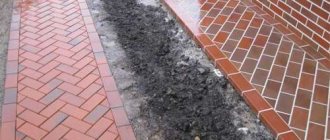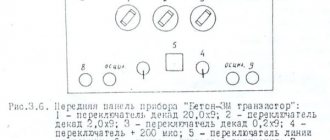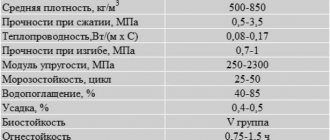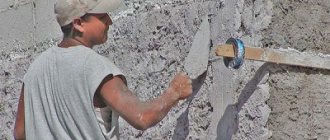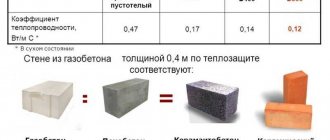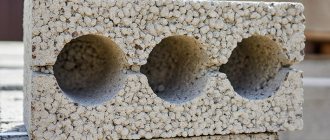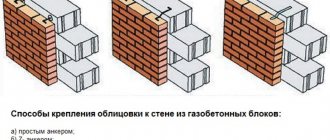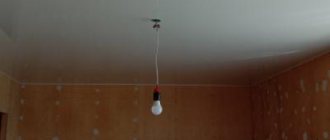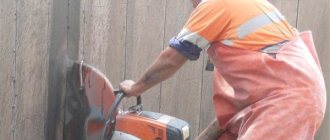Concrete facade panels for exterior decoration of a house are used when it is necessary to give the building uniqueness, create strong protection for the walls from external circumstances, and add elegance to the structure.
For outdoor use today there is a huge range of panels that meet all quality standards, are made from a variety of materials, and come in all sorts of colors and textures. Facade concrete panels are one of the most fashionable and practical finishing materials today.
Features of concrete panels
The production of slabs is based on concrete reinforced with reinforcement. Their production involves several steps and therefore takes time: first of all, the concrete mixture is painted, then poured into molds, adding fiberglass. Then, maintaining a given temperature and humidity, the concrete hardens - this stage is the longest (28 days). Next, protective compounds are applied to the slabs to protect the slabs from moisture.
The highlight of external finishing with concrete elements is the durable and long-term protection of walls. Similar slabs for covering walls are a relatively new type of material, so their choice is not yet pleasing with variety. At the same time, everyone can choose a material based on external parameters.
Useful video
Concrete
- one of those materials that until recently few people dared to use in the interior. Garden paths, garage floors, gazebo columns - perhaps; but not on the kitchen countertop or bathroom floor. However, in recent years, with the growing popularity and increased demand for concrete in the interior, it has gained sympathy among supporters of modern design around the world. Designers and architects discovered a certain aesthetics and charm in concrete and began to actively use this simple material in their projects.
aimeejiline.tumblr.com
New York Magazine
Concrete is an environmentally friendly, widely available and inexpensive material; it is thermally and moisture resistant. With proper processing, complemented with beautiful decor and textiles, concrete can look no less luxurious and elegant than marble, granite or.
www.giesendesign.com
by Sergey Makhno
by Sergey Makhno
Walls finished with concrete are a bold solution inherent in loft spaces. Concrete is an ideal background for bright posters, paintings,...
by Robert Mills Architects
costinm.tumblr.com
by Birgitta Wolfgang Drejer
Concrete ceiling
Concrete is increasingly used to decorate ceilings in industrial and minimalist styles. However, it should be borne in mind that a ceiling that is darker than the walls visually looks lower. Paint the concrete in light colors if you have...
modernmagazin.com
by Radka Valova of OOOOX
Concrete floor
Concrete flooring is gaining more and more popularity. It is inexpensive, durable, environmentally friendly and, importantly, easy to care for.
A concrete floor can have its original rough texture, or it can be smoothly polished and coated with a glossy varnish. Such a floor will look truly luxurious in a modern style interior (it is difficult to come up with a more budget-friendly covering).
thedesignchaser.com
Another advantage of a concrete floor is the ability to paint it and paint it with intricate patterns using stencils. Nowadays you can find a wide variety of paints for concrete on sale, giving endless scope for creativity.
Types of concrete panels for facades
Any class of concrete panels is possible in a variety of colors, but they are generally grouped as follows:
- under the brick. The appearance replicates brickwork. The parameters imitate ordinary brick as much as possible, but the dimensions of the panel itself may be different;
- imitation of stone cutting. The picturesque nature of this class allows the use of the panel not only on the external wall of the building, but also for interior decoration. This look pleases with a huge selection of colors. The product has an outer ceramic layer to create strength and is relatively large in size. This type has the highest price, which makes it affordable;
- decor in volumetric format. These facing slabs are quite difficult to install; they create a three-dimensional pattern on the outside and hide the seams. Installation is carried out using compounds using silicone. Apply this material to the frame or glue;
- imitation board. Dimensions, appearance and pattern create the illusion of a wooden board. This variety has no edges or locks. Fastening to the frame is carried out with an overlap or maintaining a gap;
- imitation stone. During the manufacturing process, granite chips are added to the solution. A distinctive feature of this material is its low price. There are various configurations of quadrangular models on the market, as well as various sizes;
- voluminous decor. The impression of volume is created by the variety of sizes, thickness, unevenness, and deviation on the surface and constitutes a three-dimensional appearance. The concrete structure is not hidden here.
Due to the fact that all panels are available in a variety of tones, the buyer can choose the necessary material to suit his taste. Among them there is a category for painting yourself in the desired color.
Required proportions
It should be said about the ratio of water and cement in the mixture, which is decisive for the strength of concrete. During the preparation process, the ratio of water to cement must be ideal, then the concrete will be of high quality.
In order for the cement to harden, 25-30% water is enough, but in this case you will get a dry mixture that will be very difficult to handle when laying.
Some people add more water than necessary, which leads to a decrease in strength due to the appearance of air bubbles when the water evaporates.
Properties of wall blocks: advice on selection, features of application and installation (130 photos and videos)
Properties and types of heaters - how to choose the right heating system and use the equipment correctly (110 photos)
DIY vinyl siding installation: step-by-step application master class and instructions for installing panels (100 photos)
Color options
Based on the work of designers, the construction market pleases consumers with a wide color palette.
The manufacturer of façade concrete panels colors them using natural dyes to achieve maximum resistance to ultraviolet rays. Thanks to high technology, various shades of white, ivory and standard grays are achieved. This assortment of colors pleases adherents of the fashionable loft style; the image of concrete is emphasized by dark shades of gray, even black.
One of the latest innovations is 3D panels, where the light tone varies depending on the lighting angle and time of day.
Specifications
One of the main advantages of concrete facade panels due to their composition is strength, which is achieved by a combination of fiberglass and concrete. Walls covered with concrete panels are frost-resistant and have a long service life. Products for mounting on a frame are up to 13 millimeters thick, and their weight per 1 m² reaches 32 kg. The most common dimensions are 300x500, but some manufacturers have products up to 21 cm wide.
In addition, manufacturers guarantee a service life of concrete elements of more than 30 years of use. The slabs are resistant to fading, force loads (up to blows with a hammer), and high temperatures (do not burn).
For making furniture
Even furniture is made from concrete. The results are original and bright objects, especially in combination with metal and wood.
A concrete coffee table will become the main accent of the room and can transform the entire interior. Dining tables, chairs - all this can be made with your own hands.
Be sure to complement your outdoor furniture with removable bright pillows for convenience. Such products will be inexpensive and almost eternal with proper processing. The use of fiber cement, which contains reinforced fibers, will give strength to thin slabs and will allow you to assemble even shelving and chests of drawers.
In the USA there is already a whole industry for the production of such furniture. In online stores you can purchase ready-made mixtures along with detailed instructions so that the product turns out right the first time.
Application area
Concrete facade panels for covering the outside of a building are used both in domestic construction work and in government and industrial buildings: water parks, hotels, entertainment and office centers, shopping and sports buildings. Due to the fact that the concrete curtain wall guarantees not just reliable support, it hides old uneven surfaces and thereby saves the cost of bringing the walls into an aesthetic appearance. For buildings with a high fire risk, façade concrete slabs are an excellent solution due to the product’s fire resistance.
If the size of the building is impressive, then an excellent economic solution would be to cover the walls with such slabs indoors. Due to the fact that some types fit harmoniously into the interior.
Interior with concrete walls, the process of creating a fashionable covering
We begin a step-by-step introduction to the process of creating a fashionable concrete wall covering, watch the following video
I won’t even argue with the fact that concrete wall coverings in the interior are chosen exclusively by brave and independent individuals. But even if you consider yourself one of them, then in addition to creating a concrete interior, you will have to work hard on its design.
So that concrete fits into other elements of decor, furniture, etc. Although, I think you can meet daredevils for whom only concrete and nothing else will suit!
Concrete design with a fireplace Combining imitation concrete pavement with wood
To make your design with concrete look more impressive, you need to properly organize the interior space.
Interior with concrete walls, how to imitate concrete depending on the area!
Firstly, it is preferable to decorate a concrete wall in spacious rooms, so you will perfectly fit it into the Loft style. If you decide to decorate a concrete wall in a small room, then it is best to use not real concrete, but its imitation. For example, decorative plaster or microcement.
Concrete in spacious rooms
We clean the surface of the walls from previous coatings, this could be paint, plaster, whitewash, wallpaper, etc. Then an invisible protective impregnation or primer is applied at your discretion. Next comes the best part, all the potholes, pits and depressions are the natural texture of concrete, so you leave them and move on to the next stage. Next we use our imagination; here, as they say, it’s not for everyone. You can glue a plinth, hang a cornice, and also decorate the interior with stucco molding, highlighting sockets and other interior areas. The best combination for a concrete interior is with glass. A sconce with crystal pendants will gracefully highlight a brutal concrete wall.
Concrete interior with stucco
Concrete in a small room
At the initial stage, the process is not much different. We remove the previous coating. Then we level, putty, plaster, prime. Next, depending on your choice, we apply decorative plaster or microcement. In small rooms, it is recommended to decorate the wall in imitation concrete, not in the entire room, but only one wall or corner. It would be most advantageous to finish the remaining walls with brick, using special “brick-like” tiles. Or decorate the wall with wood, such as lining or laminate. You can also use metal, or simply paint the walls in a contrasting color.
Interior in combination of concrete and brickwork
Combination of concrete with other materials and paints
Concrete combines with any surface due to its bright contrast. Therefore, glass, wood, and textiles are used, whatever you have a passion for. Just as I mentioned above, concrete walls can be diluted with contrasting colors by painting the adjacent walls in a suitable color. The main thing here is to use your imagination, with caution. For example, concrete can serve as an excellent backdrop for bright paintings and unusual furniture. And in contrast, the walls painted white look calm and not intrusive.
Concrete combination options
Feel free to use bright accents in the form of decor to soften the heavy concrete atmosphere. The room should be comfortable and cozy, so cold concrete walls should be complemented with a high-pile carpet, or a soft sofa, or all together, there are no limits to the flight of your imagination.
Option for the living room Add bright colors with pictures on the wall and pillows Loft with concrete walls
Concrete is a material for rough finishing, but in the last few years it has begun to be used for interior design and decoration. This material looks different depending on the processing: colored, smooth, glossy, textured. Kvartblog asked its regular expert, designer Valentina Konstantinova, to talk about options for using concrete in a modern interior and the styles into which they fit perfectly.
- interior designer, decorator. Valentina has been working on public spaces and residential interiors for many years. He prefers to work from the very beginning - from setting tasks and thinking through the overall concept - to the final decor. Currently Valentina is a creative designer.
Preparation of sheathing for concrete facade panels
The installation of concrete panels should begin by removing large irregularities, cleaning, filling cracks, and priming the surface. It is advisable to provide a vapor barrier under the structure. If necessary, install insulation. The next step is installation of the frame. Wood material is allowed for lathing, but it must be thoroughly impregnated with antiseptic impregnating compounds. Boards must be selected without defects and large thickness.
Then the frame elements are installed step by step, having previously measured the walls. The horizontal guides are installed first, then the vertical ones. A sheathing is created around the perimeter of the openings so as to maintain a gap of less than 30 mm, which in the future is filled with polyurethane foam.
It should be taken into account that concrete panels are fastened above 150 mm from the ground. When creating a structure, be sure to use a level and maintain a single plane, which will hide the unevenness of the walls.
Installation of concrete facade structures
There are no difficulties in fastening facade slabs. You just need to follow the sequence of steps. Installation of the first element begins from the corner. Self-tapping screws are used as a fastening element, which should secure the plates in the middle of the profile (2 or more pieces). The corners are joined by cutting the edges of the material at a 45° angle. The next row of slabs is overlapped (3 mm) over the previous one. Before starting work, you need to familiarize yourself with the preliminary calculations so that the joints of the slabs do not coincide and are staggered.
Afterwards, all seams are sealed and painted over. Typically, paint is included with the slabs. For sawing products, it is most convenient to use an angle grinder and a diamond-coated disk. Openings are designed by changing the overlap sizes between rows.
In the case where the decorative design of the external corners is different, installation work begins with them.
Upon completion of the work, the building acquires new outlines and a perfect, proven design.
Conclusion
Now you know what decor made in an industrial style is and you know how and with what materials it can be implemented in a residential space. Find out more by watching the video in this article.
If you have personal thoughts about the use of concrete as a decorative material, tell us about it in the comments to what you read.
June 26, 2020
If you want to express gratitude, add a clarification or objection, or ask the author something, add a comment or say thank you!
Noticed: everyone always looks with interest at beautiful photos of interiors with concrete finishes, furniture and even concrete decor. Some are delighted, some are outraged, but no one is indifferent. Concrete is definitely beautiful. True, it is a little difficult to implement, and it is also not appropriate everywhere.
After all, the main problem of using concrete in the interior is that no one knows: a) how to make such repairs: how concrete walls/floors/ceilings are practically made, where to find a skilled craftsman, and what kind of concrete this is; b) how not to let concrete finishes kill the comfort of home and how not to turn the house into a factory closet.
Concrete interior rules
Let's start with the second question, here are 3 basic rules for using concrete.
Know your limits
Modern technologies make it possible to “clad in concrete” anything: ceilings, walls, floors, furniture, chandeliers, whatever, even boxes of household appliances. But if you want the room to remain residential and comfortable, it is important not to overdo it.
If you live in a standard city apartment, use concrete only on certain surfaces, for example, exclusively for the floor or exclusively for the walls (more precisely, even for one of the walls or part of the wall). Only if the housing area exceeds 100 square meters, and each room is spacious and has a high ceiling, can you afford a more brutal concrete finish.
Feel the color
Concrete surfaces really feel bare and cold. Fill the room with warmer, softer colors to calm the interior. Don't worry, it won't become less dynamic. Designers recommend combining concrete gray with shades of yellow, burgundy and orange, and using golden and copper shades of metals. Consider the lighting: let the light be not only warm, but also spot-on, that is, it is better to have many cozy lamps at different levels than one bright chandelier in the middle of the ceiling.
Keep it cozy
Even the most “masculine” concrete interior can and should be cozy and psychologically pleasant. Concrete is very softened by natural wood, rounded upholstered furniture, and carpets that are pleasant to the touch. Concrete walls are elegantly combined with velor and velvet textiles, knitted textures, fur and leather (faux leather is trending). Don't be afraid to use "mom's" objects and furniture in the room, concrete will still make everything look fresher and more solid.
Pros and cons of concrete panels
Taking into account the components and material of the plates, we can accurately call this product durable. In addition, such a facade has positive characteristics:
- longevity;
- endurance to temperature fluctuations;
- neutrality to moisture;
- resistance to all types of mold and mildew;
- color fastness from exposure to sunlight;
- mechanical stability;
- sound insulation;
- resistance to temperature changes;
- fire resistance;
- picturesqueness.
To this it is worth adding relatively easy installation and simple maintenance. Nature itself will take care of your facade, washing away dust and dirt with rain. In the case of three-dimensional forms, a brush and water are enough to remove dirt.
Of the minuses it is worth noting:
- significant mass of the structure, which requires a solid foundation;
- Difficult processing of slabs; additional tools are required to change dimensions.
Examples of finishing houses with cladding panels
The photo shows an example of using concrete façade panels for a private residential building. This reliable material turned a nondescript building from the rural outback into a fashionable Western European-style house.
Here it is worth noting the harmonious use of slabs of different sizes. In addition, it is difficult to accurately determine the purpose of the building. Either this is a residential building of 2-3 floors, or a swimming pool, which tells us how concrete-look façade panels change the appearance.
In the third image we can see how the facade concrete panels have transformed the old factory beyond recognition, turning it into a fashionable shopping center. The combination of two colors is also cleverly used here: bright red and classic white.
Concrete in the interior of the apartment
Concrete walls combined with wooden beams on the ceiling and modern furniture will create an interesting contrast. A room in which one part of the walls is painted, and the other shows the natural texture of the material, will look impressive. Dark coated concrete walls are perfect for your bedroom if you don't like getting up early.
The advantages of a concrete floor include ease of maintenance and durability; moreover, depending on the treatment, it looks completely different: it can be given the appearance of stone, a pattern or inscription can be applied using a stencil. Maroon 5 lead singer Adam Levine's kitchen features a high-gloss concrete floor and white painted walls. Shiny black chairs and modern appliances look great against this neutral backdrop.
Use concrete for the floor and walls at the same time - this solution will not look boring if they differ in color. For example, in the mansion formerly owned by American comedian Steve Martin, dark concrete walls and ceilings contrast with lighter-colored floors. A wooden tabletop with a glossy finish was a good choice for the interior.
Concrete will fit most organically into loft, eclectic and minimalist interiors. In model and actress Emily Ratajkowski's Los Angeles apartment in a former factory, concrete floors and white walls complement the eclectic furniture and rugs and extensive art collection.
A good solution would be to combine several natural materials in the interior of a room, for example, concrete, wood and brick, which will create a feeling of dynamics. The brick can be natural or artificial - it doesn’t matter. The use of such a combined solution is now very important.
It is not necessary to use real concrete for decoration; there are many ways to imitate it: using plaster, concrete wallpaper or putty material.
If you can't yet decide on a concrete floor or walls in your apartment, start by incorporating small elements of it into the interior. A variety of designs are created from this flexible material: columns, niches, countertops, cabinets and even dishes. The concrete countertop in the kitchen of supermodel Cindy Crawford, on the one hand, due to its size, is convenient for cooking, and on the other hand, it creates a background against which food looks even more appetizing.
The material was prepared by the Kashirsky Dvor agency.
7061 0 0
Greetings dear readers. Not long ago I decided to use decorative concrete in the interior. The fact is that the moment has come when simply painting walls seems boring, and wallpapering seems banal, and you simply want something special. It was then that the decision was made to use concrete and believe me, the result exceeded all expectations.
In this article I want to talk about the reasons to use concrete as a decorative finishing material. In addition, I will show examples of rooms decorated using concrete.
